By Josh Gordon
When Daniel Andrews released the government’s much-anticipated housing statement in September last year, he promised “bold and decisive action now” to help fix the state’s housing crisis.
The proposition was simple: build more homes, and they’ll be more affordable.
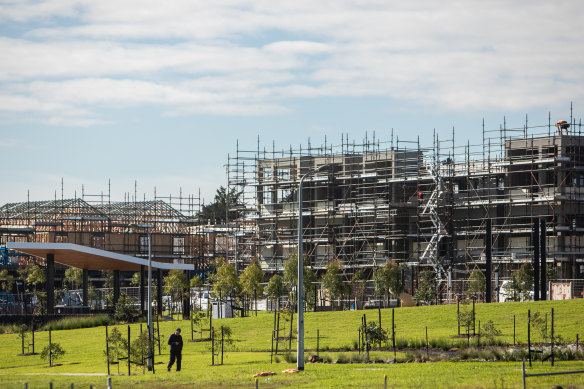
The Victorian government’s policy is to build 800,000 new homes in a decade.Credit: Scott McNaughton
With affordability at the worst ebb for 30 years and rents soaring, there was a palpable sense of urgency, with a promise that the state was “going to get on with it – quickly”. It was Economics 101. Lift supply, price goes down.
Roiling beneath the surface was also a sense of political urgency. The housing statement was to be Andrews’ final policy act, delivered just days before he would stand down, book-ending a nine-year run as premier.
Andrews’ trademark muscular Mr Fixit approach was underpinned by a target to build 800,000 new dwellings over a decade, or (as the statement itself noted) “around 80,000 a year”. Case closed.
Victorians could be forgiven for wondering what happened. The government, now led by Jacinta Allan, has been forced to face an uncomfortable reality: building an average of 80,000 homes each year for the next decade presents a monumental challenge.
A year on, what progress has been made? And can the Allan government possibly deliver on the expectations set by Andrews?
Planning Minister Sonya Kilkenny insists the sense of urgency projected by Andrews a year ago remains, and the plan to build 800,000 homes over the next decade is on track.
“I’m not going to apologise for setting a really ambitious target,” Kilkenny told The Age in an interview marking one year since the release of the statement. “I think we need to do it, I think it speaks to the urgency of the situation now, and it also speaks to the need for pretty big, bold reforms.”
Although light on detail, the housing statement, released on September 20 last year, set out a raft of proposals to boost the supply of homes, including rezoning surplus government land, fast-tracking housing developments that include “affordable housing” and clearing a backlog of building permit applications.
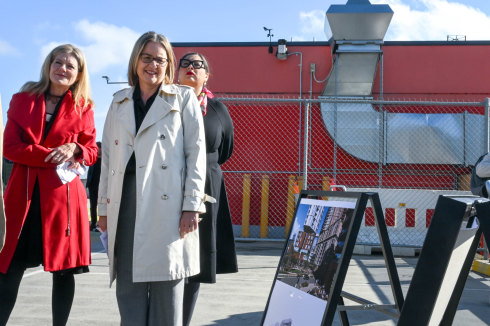
Premier Jacinta Allan and Planning Minister Sonya Kilkenny discuss housing (left) at Docklands in May.Credit: Eddie Jim
It also included plans to deliver 60,000 homes across 10 key “activity centres” dotted around Melbourne and – controversially – demolish and redevelop Melbourne’s 44 ageing high-rise public housing estates by 2051.
Kilkenny hasn’t had the same public profile as some of her predecessors. Given the sometimes murky nexus between politics and planning, that’s not necessarily seen as a bad thing, at least from the government’s point of view.
But the link between planning reform and intergenerational equity is clearly something Kilkenny is passionate about. Figures provided to The Age show she has used her special powers as planning minister to approve 8443 dwellings so far this year, compared to just 4618 for the entirety of 2023.
“We want the next generations to be able to have a place to call home, we want those homes built in the right places … close to public transport, close to jobs, to services, close to schools. So where those homes go matters, and the types of homes that are built also matters.”
Progress is undoubtedly being made, although it is increasingly clear that this will be a long game unlikely to be solved by the state government alone. Recently, the government unveiled draft dwelling targets for 32 local government areas, and filled in details about new building height limits for Melbourne’s new 10 activity centres.
Talk to people in the housing development industry and they’ll tell you it’s increasingly tricky to make money out of housing, particularly the type of higher-density, urban infill developments that might fit the government’s bill as good quality, affordable housing.
Maxwell Shifman, chief executive of development group Intrapac Property, reckons in the current environment the government has “zero chance” of hitting the target.
“Housing completions, approvals and starts are all well down on the numbers that they need,” Shifman says.
To a significant degree, Shifman blames planning red tape and high state government taxes. He warns the cost of building in Victoria has been increased by the government’s Big Build infrastructure agenda, soaking up labour and raw materials (Eco 101 again). It is all very well to talk about higher-density, good-quality, affordable housing. Building it is another matter.
“It is becoming impossible to build apartments in Victoria deemed to be affordable,” Shifman says. “The development industry can no longer deliver something that meets affordability criteria ... because of the cost involved.”
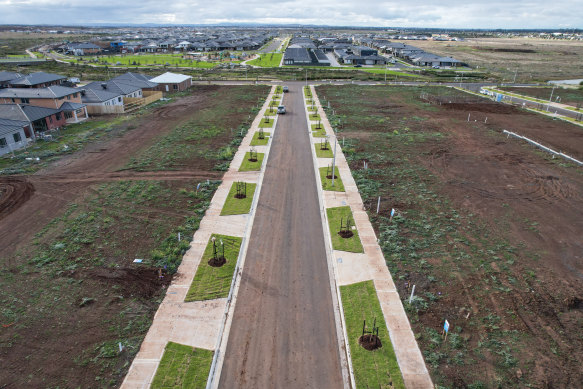
The government wants more dwellings built in established areas rather than the urban fringes.Credit: Jason South
A big part of the government’s agenda is to build “up and not out”. The idea is that Melbourne’s past expansion on the fringes must now be replaced by consolidation in existing suburbs.
Specifically, the government wants 70 per cent of housing growth to take place in established suburbs, with only 30 per cent on the fringes, reversing a trend for Melbourne that has played out over many decades. This will require an extra 1 million homes in established suburbs by 2050.
Kilkenny and her department have been busy working on a longer-term plan looking at how Melbourne will tackle expected population growth over the next 30 years.
The problem is, by 2051 the state’s population is expected to swell by half to 10.3 million, up from about 6.8 million. The government’s own figures suggest that merely to keep pace and prevent the housing crisis from getting any worse, Victoria would need to build about 57,000 new homes each year, or a total of 1.6 million by 2051.
But to ease what the housing statement described as the “acute pressure”, Victoria would need to deliver 2.24 million homes by 2051, or an average of about 83,000 homes a year for the next 27 years. Hence, the target to build 800,000 new homes within the next decade.
Put another way, seven out of every 10 new houses delivered in the government’s plan would be needed just to soak up expected population growth. The remaining three houses would lift supply over the medium term, making housing more affordable. That’s the theory, anyway.
In reality, Victoria has never built 80,000 homes in a single year. The closest it came was in 2018, when almost 72,000 dwellings commenced.
But since then, a perfect storm of rising interest rates, soaring construction costs, skills shortages, general cost of living pressures and supply chain problems linked to the pandemic has underpinned a sharp drop in building activity.
The government remains confident the outlook is set to improve. There are early signs construction activity could be set to pick up, particularly relative to other states.
Last year, construction started on just 53,795 dwellings, the lowest for a calendar year since 2013, well below the annual average for the past decade of 63,895, and a long-way short of 80,000.
Victoria’s recent track record is even more alarming when population is factored into the equation.
Expressed as a rate, last year, work started on just 7790 dwellings for every 1 million Victorians, the lowest since 2007, when Australia was hit by the Global Financial Crisis.
The number of dwellings being approved by local councils provide clues about where things are heading. On this front, the outlook is also patchy, although some (including the government) believe building activity is set to steadily pick up, particularly if interest rates are reduced.
During the 12 months to the end of June this year, Victorian councils approved a total of 51,656 houses, flats and townhouses for construction, the lowest financial year result since 2012-13.
The Housing Industry Association reckons this calendar year just 52,865 dwellings will be started in Victoria, rising slightly to 53,259 in 2025. If those forecasts prove correct, that implies an annual average of almost 87,000 dwellings would be needed for the subsequent eight years to hit the target.
Jeroen Weimar, the senior public servant responsible for implementing the government’s housing agenda, says the target of 800,000 homes over a decade remains challenging.
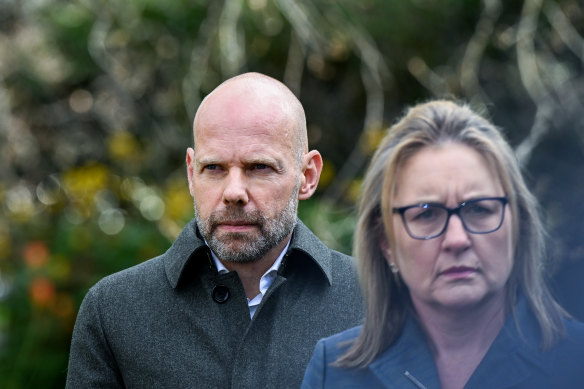
Housing tsar Jeroen Weimar and Premier Jacinta Allan.Credit: Joe Armao
But he too warns the status quo is not an option. “This place is going to look fundamentally different in 25 years’ time,” Weimar tells The Age. “Melbourne will be the size of London from a population point of view – a city of over 8 million people. The state will have over 10 million people in it, and as such we can’t think about housing incrementally.
“If we are going to accommodate the growth that we want to see, and we are going to have places where our kids and grandkids can live happy, sustainable and fulfilling lives, then we need to create more housing capacity in our system. It is not just a short-term dash, there’s a structural set of problems we have to overcome.”
Much of the government’s focus has been on local councils, which have repeatedly been blamed (some would say unfairly) for blocking good developments to insulate the incumbent residents responsible for electing them from any perceived loss of amenity.
So in June, the government released draft targets for housing across 32 local government areas.
Although some municipal governments have embraced the idea of housing targets, others have expressed concern that not enough is being done to boost the infrastructure and services that will be needed to accommodate future growth.
According to the government’s own data, not a single inner, middle or outer council has even come close to building enough new homes to hit their new draft housing targets, with some required to more than triple the number of homes they build each year compared with recent averages.
The government has previously signalled a willingness to wield a stick by imposing penalties if councils don’t deliver. For now, however, it remains unclear how the targets might be enforced.
As planning experts point out, councils and the state government generally don’t build homes. Rather, they facilitate building activity, within fairly strict parameters.
“I’d love to be able to build a home,” Kilkenny says. “In my parallel world, if I had that kind of skill .... absolutely. But I’m the planning minister, so what do I need to do is to get the conditions and settings right for the market to come in to be able to build those homes.”
Planning department officials are now talking about the housing targets as an expression of “feasible capacity”, rather than an iron-clad quotas for housing.
This may be bureaucratic jargon, but it is also a belated recognition that councils themselves can’t force developers to build. Rather, they are now being told they must make sure there is enough appropriately zoned land to allow sufficient private sector development to meet the targets. Whether the property industry actually delivers is another proposition entirely.
Marcus Spiller, principal and partner of SGS Economics & Planning, said metropolitan Melbourne was one of the fastest growing cities in the developed world.
“We shouldn’t be under an illusion that just because we zone for more housing the developers will come,” Spiller said. “The problem that we are facing now … isn’t the planning, it is more the adverse economics of development. It is very difficult for developers to make projects stack up unless they are at the really premium end of things.”
Planning Institute of Australia Victorian president Patrick Fensham said the government had done a good job identifying where higher-density development should occur.
‘The problem that we are facing now … isn’t the planning, it is more the adverse economics of development.’
Marcus Spiller
But he suggested the problem of how to provide the extra infrastructure, services and public space needed to protect Melbourne’s coveted liveability had been kicked down the road.
“If you are identifying where you are going to have higher-density development, and sometimes significantly higher-density development, you need to be provided with accompanying global infrastructure and local public domain and local public open space to accommodate the growth,” Fensham said.
In particular, Fensham said the government needed to accompany its aspirations to build more houses in established suburbs with social and affordable housing, a target to reduce the amount of car parking, access to public open space, walkable streets and increased tree canopy.
Infrastructure Victoria chief executive Dr Jonathan Spear said boosting access to housing remained a complicated problem years in the making that would take time to solve.
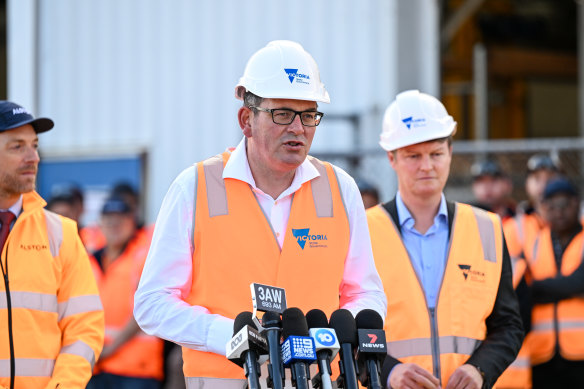
The high-vis promise of 80,000 new dwellings a year was Daniel Andrews’ parting gift to his colleagues. Credit: Joe Armao
He said the government had made a solid start, setting targets for each local government area and identifying activity centres earmarked for higher density.
But he also warned the government would need to find a better system to raise revenue from developers to help pay for the infrastructure and services that would be needed to maintain liveability.
“The thing that we need to have some perspective on is that it has taken us decades to get to this point,” Spear said. “There is not going to be one single lever we can pull. What we’ve got to be doing now is start to put into place some of the planning and infrastructure and fiscal settings that will unlock more housing choice.”
Start the day with a summary of the day’s most important and interesting stories, analysis and insights. Sign up for our Morning Edition newsletter.